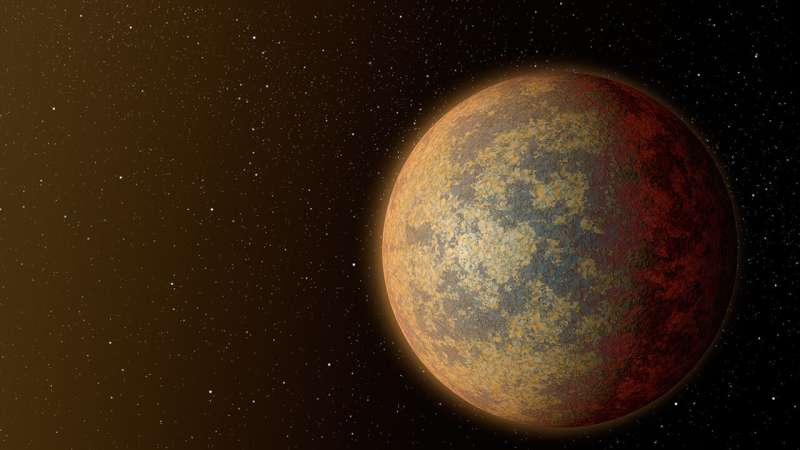January 9, 2024 report
This article has been reviewed according to Science X's editorial process and policies. Editors have highlighted the following attributes while ensuring the content's credibility:
fact-checked
preprint
trusted source
proofread
Gliese 367 b is a dark and hot sub-Earth with no atmosphere, study finds

Using the James Webb Space Telescope (JWST), astronomers have investigated a nearby sub-Earth exoplanet known as Gliese 367 b. The obtained results indicate that this alien world is dark, hot and lacks a detectable atmosphere. The new findings were published January 2 on the pre-print server arXiv.
Gliese 367 b (or GJ 367 b for short, dubbed Tahay) was discovered in December 2021 with NASA's Transiting Exoplanet Survey Satellite (TESS). It orbits Gliese 367 (also known as Añañuca)—an M-dwarf of spectral type M1.0V located some 31 light years away, nearly half the size and mass of the sun. The system also harbors at least two more planets, located farther from the host.
Previous observations of Gliese 367 b have found that it is about 30% smaller than the Earth and its mass is approximately 0.67 Earth masses. It has an equilibrium temperature of 1,367 K and encircles its parent star every 7.7 hours.
Now, a team of astronomers led by Michael Zhang of the University of Chicago has used JWST's Mid-Infrared Instrument (MIRI) to characterize the atmosphere of Gliese 367 b. The observations delivered more insights into the properties and nature of this exoplanet.
"Using the Mid-Infrared Instrument on JWST, we monitored GJ 367 b for 12.7 h, corresponding to 1.6 planetary orbits," the researchers wrote in the paper.
The observations found that Gliese 367 b is a planet with no detectable atmosphere, no heat redistribution, and a dark surface in the MIRI bandpass with a blackbody emission spectrum. The dayside temperature of Gliese 367 b was found to be 1,728 K, while its nightside temperature was estimated to be below 847 K.
According to the paper, the results rule out the possibility that Gliese 367 b has a carbon dioxide atmosphere with a pressure of more than 1 bar. It also excludes an outgassed atmosphere with a pressure of more than 10 millibar (under heavily reducing conditions), or an outgassed atmosphere with a pressure greater than 0.01 millibar (under heavily oxidizing conditions).
The collected data suggest that Gliese 367 b should have a largely molten dayside. Therefore, any volatiles in the silicate mantle of this planet should be partitioned into the atmosphere. That is why the authors of the paper concluded that Gliese 367 b must have no atmosphere, unless its bulk is free of any volatiles.
Furthermore, based on the results, the researchers suppose that the observed lack of atmosphere in Gliese 367 b indicates that the planet has considerably less volatiles as a whole compared to Earth. They assume that this lack of atmosphere can be due to the removal of initial volatiles by intense stellar irradiation.
More information: Michael Zhang et al, GJ 367b is a dark, hot, airless sub-Earth, arXiv (2024). DOI: 10.48550/arxiv.2401.01400
Journal information: arXiv
© 2024 Science X Network




















